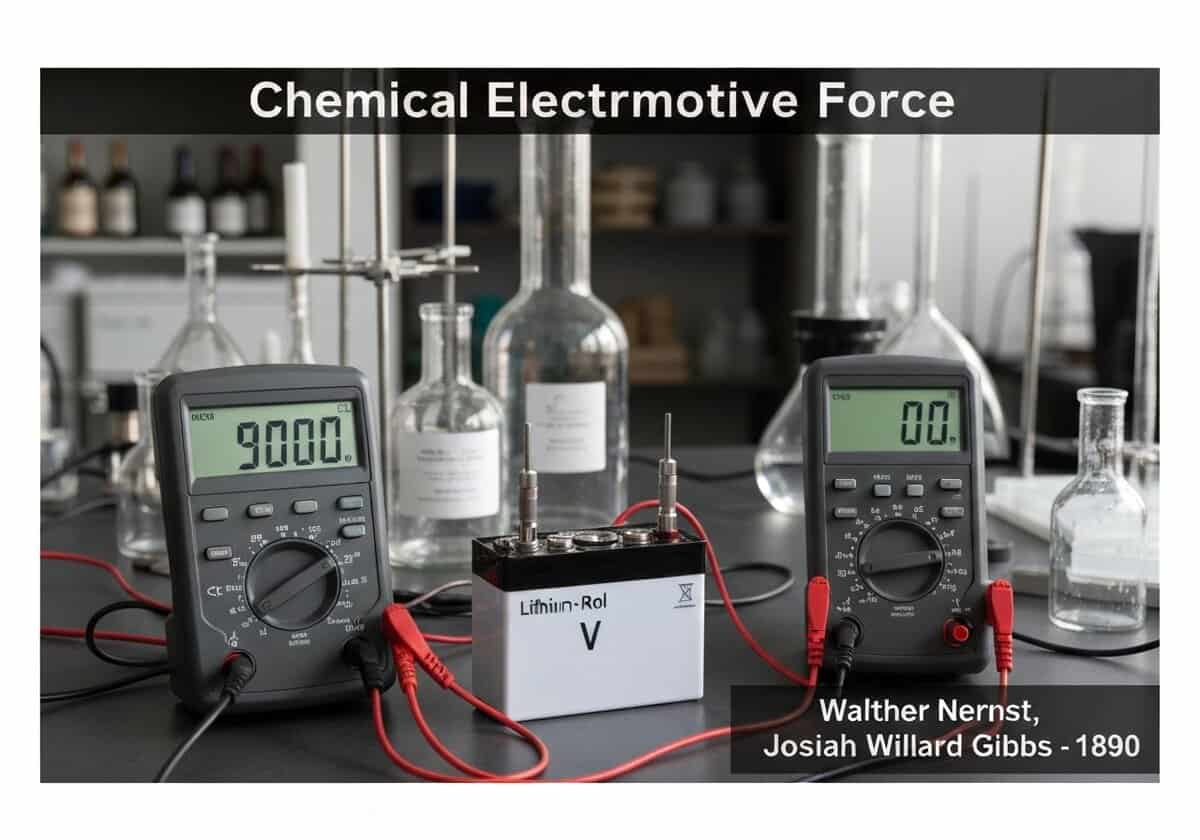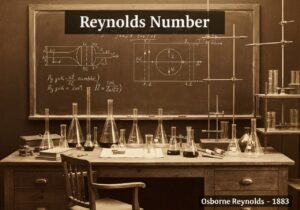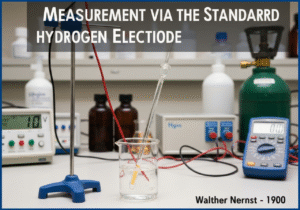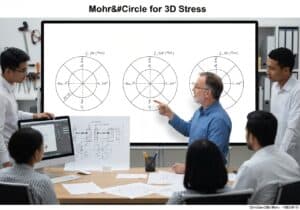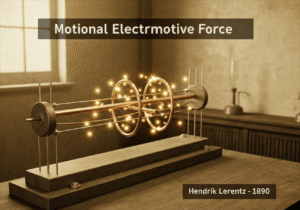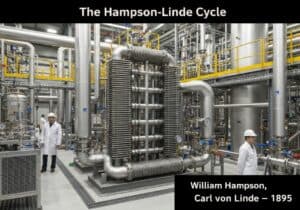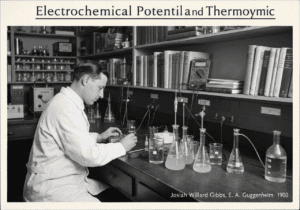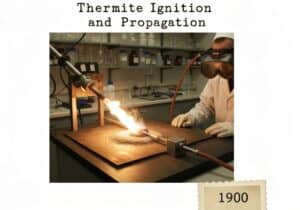In electrochemical cells like batteries and fuel cells, EMF is generated by chemical reactions. The separation of charge is driven by oxidation and reduction reactions occurring at two different electrodes. The maximum EMF of a cell is related to the change in Gibbs free energy ([latex]\Delta G[/latex]) of the reaction by [latex]\mathcal{E} = -\frac{\Delta G}{nF}[/latex], where [latex]n[/latex] is moles of electrons and [latex]F[/latex] is the Faraday constant.

